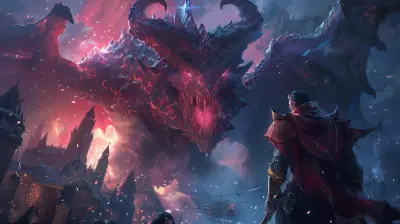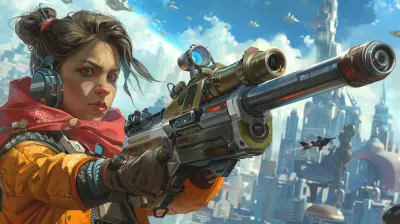The Role of Costumes in Defining Game Character Identity
16 June 2025
Ever noticed how you can often tell everything you need to know about a video game character before they’ve even said a single word? That’s not just good character design — that’s powerful costume work doing the heavy lifting. From the iconic red cap of Mario to the tactical gear of Lara Croft, costumes speak loud and clear. They tell us who these characters are, what their world is like, and what they’re meant to represent.
So let's dive headfirst into this fabric-rich topic and unravel (pun absolutely intended) the role of costumes in defining game character identity. Trust me, there's more to it than cool aesthetics and customization—though who doesn't love a snazzy outfit in a boss fight?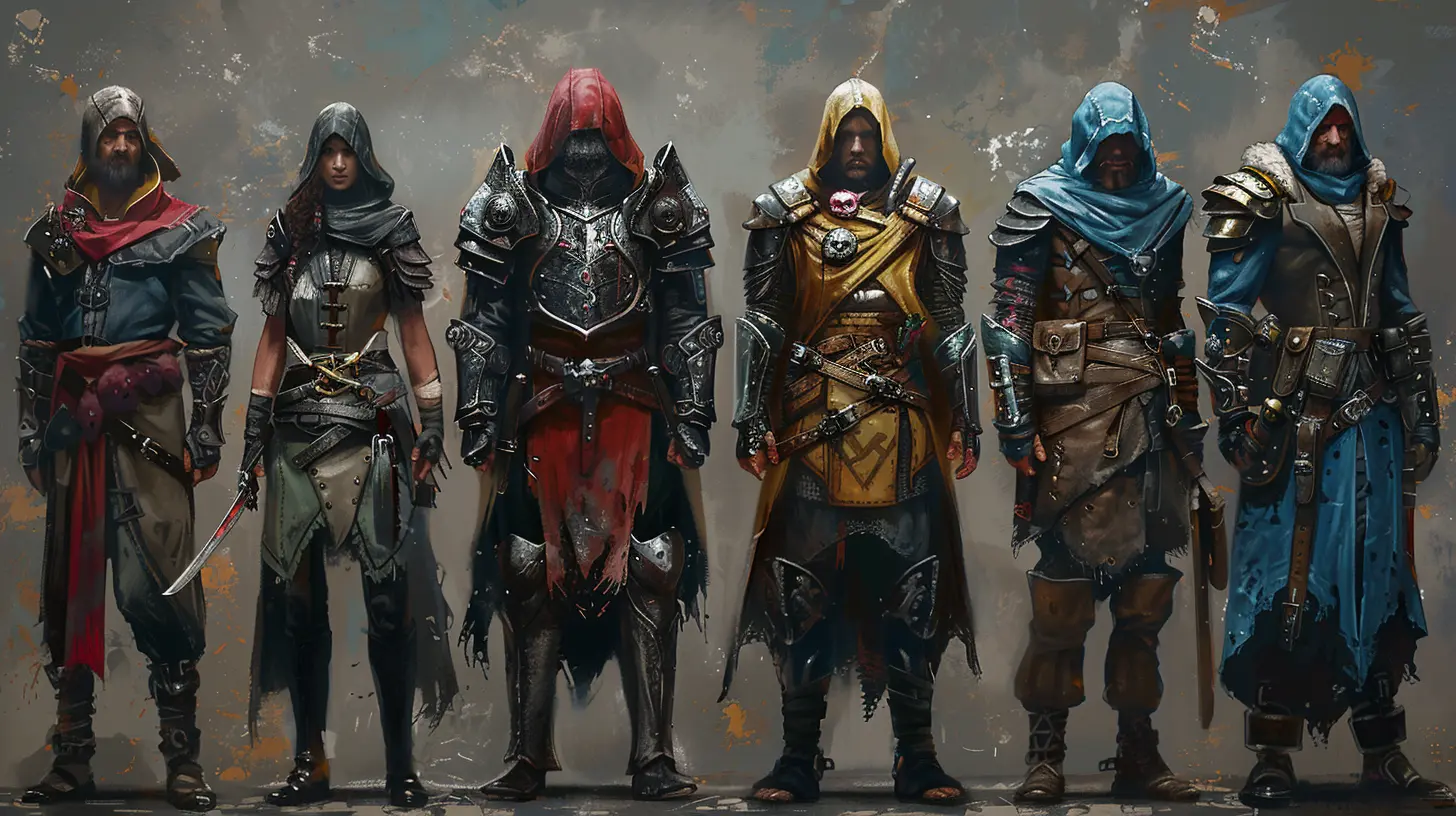
First Impressions: Why Costumes Matter
You know how people say, “Don’t judge a book by its cover”? Well, gamers do. Constantly. And that’s kind of the point in character design.Costumes are the first visual cue we get about a character. Before players even swing a sword or fire a gun, the outfit sets the tone. Are we dealing with a fearless warrior or a mysterious rogue? Are they a hero, a villain, or something in between?
Take Link from The Legend of Zelda series. Green tunic, pointed cap, leather boots—classic, right? That outfit practically screams “legendary forest adventurer.” It instantly creates a connection between the player and the game world. Costumes like these are designed to evoke emotion, establish personality, and even hint at gameplay mechanics.
Character Archetypes and Costume Cues
Costumes are visual storytelling tools. Designers use them to express personality, role, status, and even backstory without a word of dialogue.Let’s break down a few common archetypes and the costume elements that go with them:
1. The Hero
Think armor, capes, or signature weapons on display. Heroes often have bold, vibrant colors to symbolize courage—reds, blues, golds. Their costumes usually evolve throughout the game to show growth or power progression.Example: Kratos from God of War. His minimalistic, brutal look reflects his no-nonsense, rage-filled persona. As Kratos transforms across the series, so do his costumes—from ancient Greek armor to Norse-style attire. All of it ties directly to his narrative arc.
2. The Villain
Dark colors, sharp lines, asymmetry. Villains often look intimidating or eccentric. Their clothing might be more elaborate or theatrical, signaling both danger and complexity.Example: Sephiroth from Final Fantasy VII. That long black coat, silver hair, and glinting shoulder armor? Pure menace. It broadcasts his role from miles away.
3. The Rebel or Anti-Hero
These characters rock gritty, mismatched, or unconventional outfits. Look at Aiden Pearce from Watch Dogs—trench coat, cap pulled low. His style screams street-smart loner with a chip on his shoulder.4. The Mystic
Flowing robes, intricate patterns, glowing symbols. Costumes for magic users or spiritual characters reflect mystery and power.Think Yuna from Final Fantasy X. Her kimono-inspired outfit combines tradition with subtle modern touches—perfect for her role as a summoner.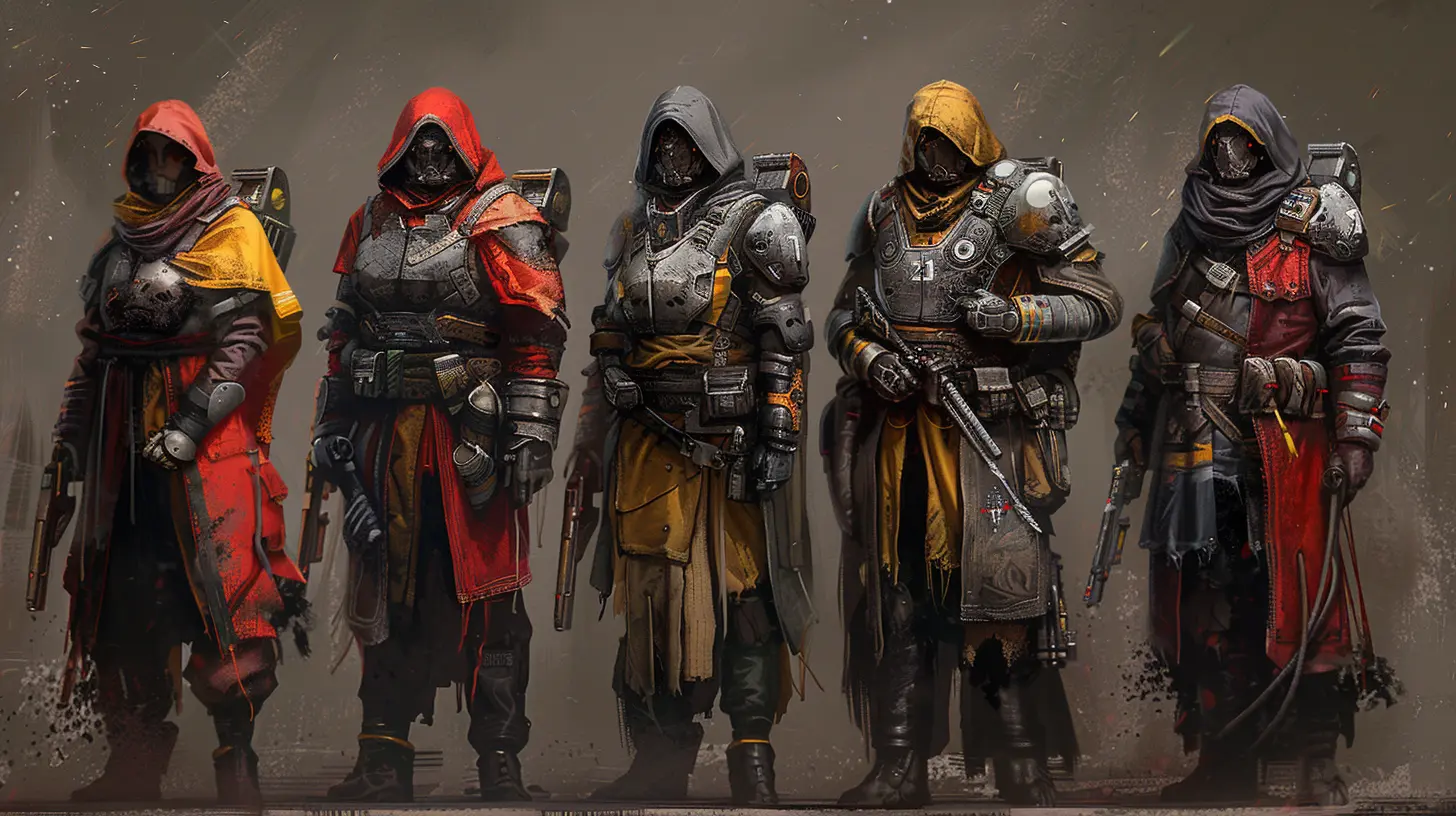
Cultural Influences and World-Building
Gaming is global. So when designers tap into cultural aesthetics, they’re not just making things pretty—they're creating immersive, believable worlds.Games like Ghost of Tsushima masterfully build their identity around authentic historical costumes. Jin’s samurai armor promotes cultural respect and historical context. It’s not just “cool samurai gear”—it’s storytelling.
Similarly, Assassin’s Creed has always leaned heavily into period-appropriate costumes. Each entry drops players into a new time and place—Renaissance Italy, Ancient Egypt, Revolutionary France—and the wardrobe reflects that perfectly. That hooked hood? It’s become iconic across eras, but still adapts to each setting.
These costume choices build authenticity. They make players feel like they’re not just watching a story unfold—they're living it.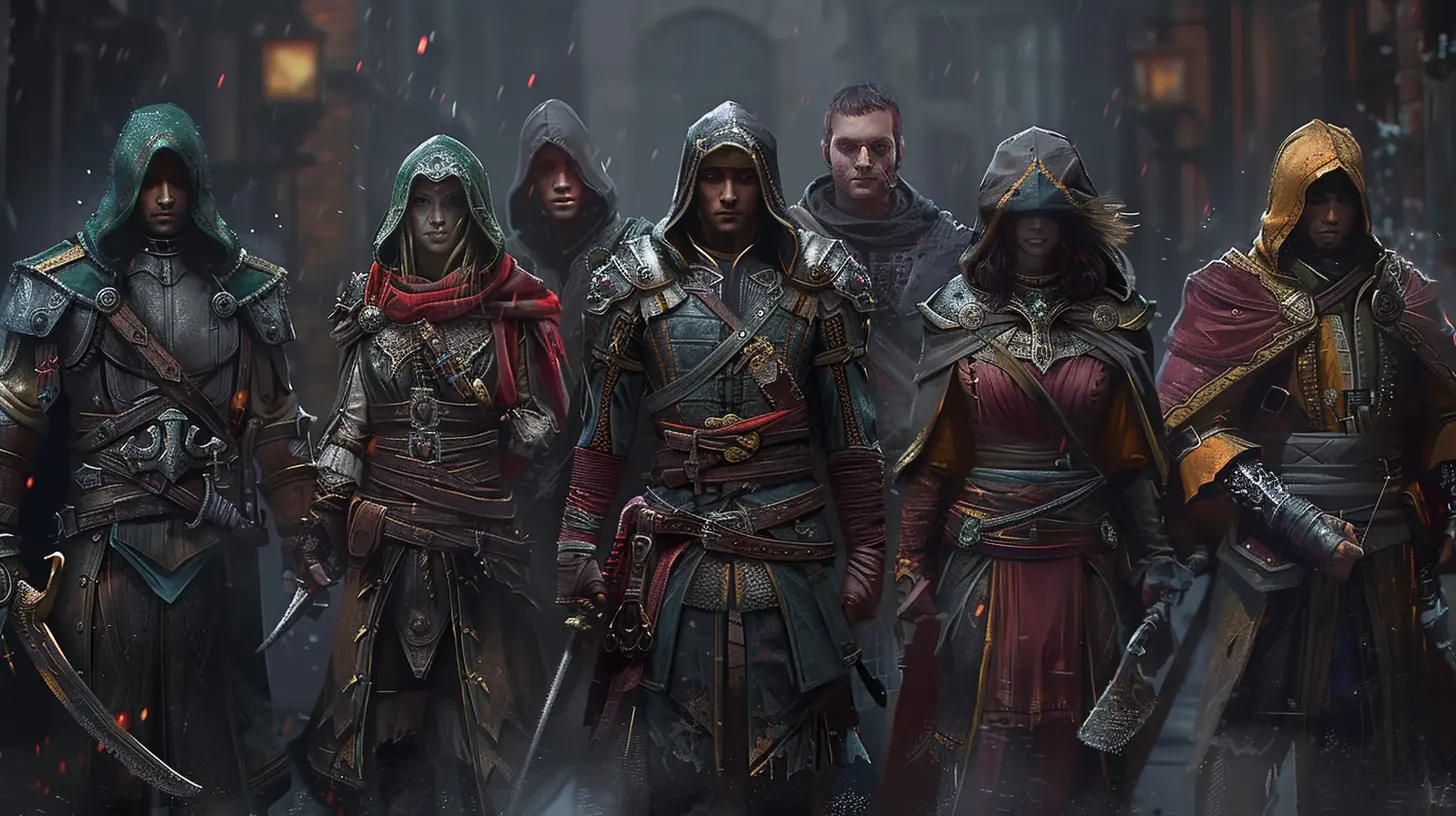
Customization and Player Expression
Let’s be real. Half of us spend more time in the wardrobe menu than we care to admit. And why not? Dressing up your avatar is fun. But it’s more than just fashion—it's personal identity in virtual form.Games like The Sims, Cyberpunk 2077, and Elden Ring allow us to tweak every inch of our character's appearance. Want to be a slick cyber ninja in hot pink leather? Go for it. Prefer a brooding knight in full armor? Totally valid.
When games give us freedom to dress our characters, they're handing over the narrative reins. Suddenly, the costume isn’t just about lore—it’s about who we are in that space. It’s deeply personal.
In multiplayer games like Fortnite or Overwatch, skins don’t always change gameplay—but they do affect how we see (and are seen by) others. Rocking a rare skin in Apex Legends? That’s social currency. It says, “I’ve been here. I’ve earned this.”
Gender, Identity, and Representation
Let’s get a little deeper.Video game costumes have historically leaned into stereotypes, especially when it comes to gender. Remember when every female character needed to wear high-heels into battle? Yeah, we’ve come a long way, thankfully.
Today’s gamers are more diverse and more vocal about representation. That’s pushed developers to craft costumes that better reflect real bodies, cultures, and experiences.
Take Aloy from Horizon Zero Dawn. She wears practical gear that suits the wild terrain she explores. No skimpy armor, no high fashion nonsense—just functionality and believability.
On the flip side, gender-fluid costume options are becoming more common. Games like Baldur’s Gate 3 and Cyberpunk 2077 allow players to mix and match appearance and identity without rigid binaries. That’s not just progressive—it’s empowering.
Costumes can affirm identities, reveal inner conflicts, or challenge norms. That’s impactful storytelling.
Evolving with the Narrative
What’s a hero's journey without a few wardrobe changes?Costumes often evolve with the character’s arc. Think of them as visual bookmarks in the narrative.
In Mass Effect, Commander Shepard’s N7 armor becomes more battle-worn and upgraded as the war escalates. It reflects not only the stakes, but the emotional toll of the journey.
Samus Aran’s armor in Metroid series evolves with power-ups. But it also changes the way you feel playing her. The stronger the suit, the more unstoppable you feel.
Narrative-driven changes in costume work like movie montages—we see the transformation in action. That’s powerful visual storytelling.
Iconicity and Memorability
Some costumes become instantly recognizable, even outside of gaming circles. Try showing someone a silhouette of Mario, Master Chief, or Chun-Li. Chances are, they’ll nail it.Why? Because unforgettable characters often have unforgettable costumes.
Designers carefully craft these looks to be distinct, cohesive, and memorable. Colors, shapes, accessories—it’s all intentional. These costumes become visual signatures, just like logos or mascots.
Think about Geralt of Rivia’s rugged leather armor, or Ellie’s flannel and backpack in The Last of Us. These looks are practically etched into our brains. They’re not just costumes—they’re part of the gaming lexicon.
The Business of Fashion in Games
Okay, let’s talk numbers. Costumes aren’t just about storytelling—they’re big business.In free-to-play games, cosmetic microtransactions are a massive revenue stream. Fortnite raked in billions thanks in large part to its cosmetic items. Skins, emotes, and themed outfits are more than fluff—they fuel the game’s economy.
But even in triple-A games, pre-order bonuses and deluxe editions often include exclusive costumes. Why? Because players want them. They’re status symbols.
Still, this raises conversations about pay-to-win culture, over-monetization, and accessibility. Not everyone can afford or access every costume. And when cosmetics start feeding exclusivity or FOMO, it can turn sour fast.
Indie Games and Artistic Freedom
While blockbuster titles go big with flashy designs, indie games often use costumes to reflect artistic integrity and minimalism.Games like Hyper Light Drifter and Hollow Knight use abstract character designs and subtle costume cues to evoke emotion and mystery. These costumes often tie directly into gameplay mechanics or world lore, but they're incredibly understated.
The beauty here is in metaphor. A mask might symbolize alienation. A cloak might hide an identity. Small choices, big meaning.
Final Thoughts: More Than Just Dress-Up
So, what have we learned? Costumes in games are far from just cosmetics. They are identity, story, emotion, and culture—stitched together with purpose.Whether they’re functional, fashionable, or pure fantasy, game character costumes shape how we perceive, control, and connect with fictional worlds. They’re the silent narrators of every scene, the unspoken truths behind every battle.
So next time you slap on a new skin or level-up your armor, take a second. Ask yourself — what does this say about my character? Because chances are, it says more than you think.
all images in this post were generated using AI tools
Category:
Video Game CharactersAuthor:

Brianna Reyes
Discussion
rate this article
2 comments
Luna Mendez
Ah yes, because nothing screams “complex character development” quite like a giant chicken suit. Clearly, a feathered ensemble is essential for deep emotional storytelling!
June 21, 2025 at 3:44 PM

Brianna Reyes
Costumes can profoundly influence character perception, even in whimsical forms like a chicken suit. They serve as visual metaphors, adding layers to storytelling and engaging players on multiple levels.
Xeno Potter
Costumes in games are like a player's second skin, shaping not just how characters look, but who they are. From a hero’s armor to a villain’s dark cloak, these outfits tell stories and reveal personalities. They make every adventure feel personal and immersive—truly, they’re essential to the gaming experience!
June 18, 2025 at 4:13 AM

Brianna Reyes
Absolutely! Costumes are vital in games, reflecting characters' identities and enhancing immersion by visually narrating their stories.
